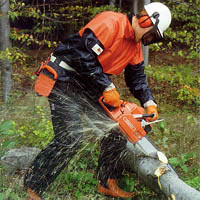- Sell Your Woodland
- Woodland for Sale
- East of England
- East Midlands
- West Midlands
- North East England
- North West England
- South East England
- South West England
- Woodland for Sale Yorkshire
- Woodland for Sale N. Ireland
- Woodland for Sale Scotland
- Woodland for Sale Wales
- Woodland Information
- Testimonials
- Woodland News
- Woodland buyers guide
- Buying woodland for sale
- Woodland Uses
- Investing in woodland
- Types of Woodland
- Resources
- Glossary
- Home Page
Woodland from Vantage Land
Woodland for sale throughout the UK. Call 01727 701641 for current availability in your area.
Logging
 Managing your woodland or forest will require some forestry skills. Hopefully you'll have a management plan for the development of your woodland and part of this will include harvesting timber.
Managing your woodland or forest will require some forestry skills. Hopefully you'll have a management plan for the development of your woodland and part of this will include harvesting timber.
Clear-cutting is one such method in which all, or nearly all, trees within a predefined area are harvested.
In private woodland you will most likely carry out a selection harvest - removing individual trees be it to remove mature timber or to thin out your trees and improve the timber stand.
Harvest methods
There are three common methods used to cut the tree in a harvest detailed below;
Cut-to-length
Trees are felled, delimbed, bucked, and sorted at the stump area, leaving limbs and tops in the forest.
Full tree
Trees are felled and transported with top and limbs intact. Full tree harvesting also refers to utilization of the entire tree including branches and tops.
Tree-length
Trees are felled then delimbed and topped at the stump. The log is then transported to the landing, where it is bucked and loaded on a truck. This leaves the slash in the cut area.
Environmental Considerations
Timber harvesting or logging can impact the environment both by cutting down trees and the disturbance to the surrounding area caused by the fall and moving of the tree. Biodiversity of your woodland can change over night following loss of habitat as well as causing nutrient depletion.
Logging on saturated soils can cause ruts and change drainage patterns and machinery can compact the soil. Harvesting adjacent to streams can increase sedimentation, lowering water quality.
Logging may also have positive effects on the environment by removing damaged or diseased trees or both, and opening up the canopy to promote growth of smaller, healthier trees.
